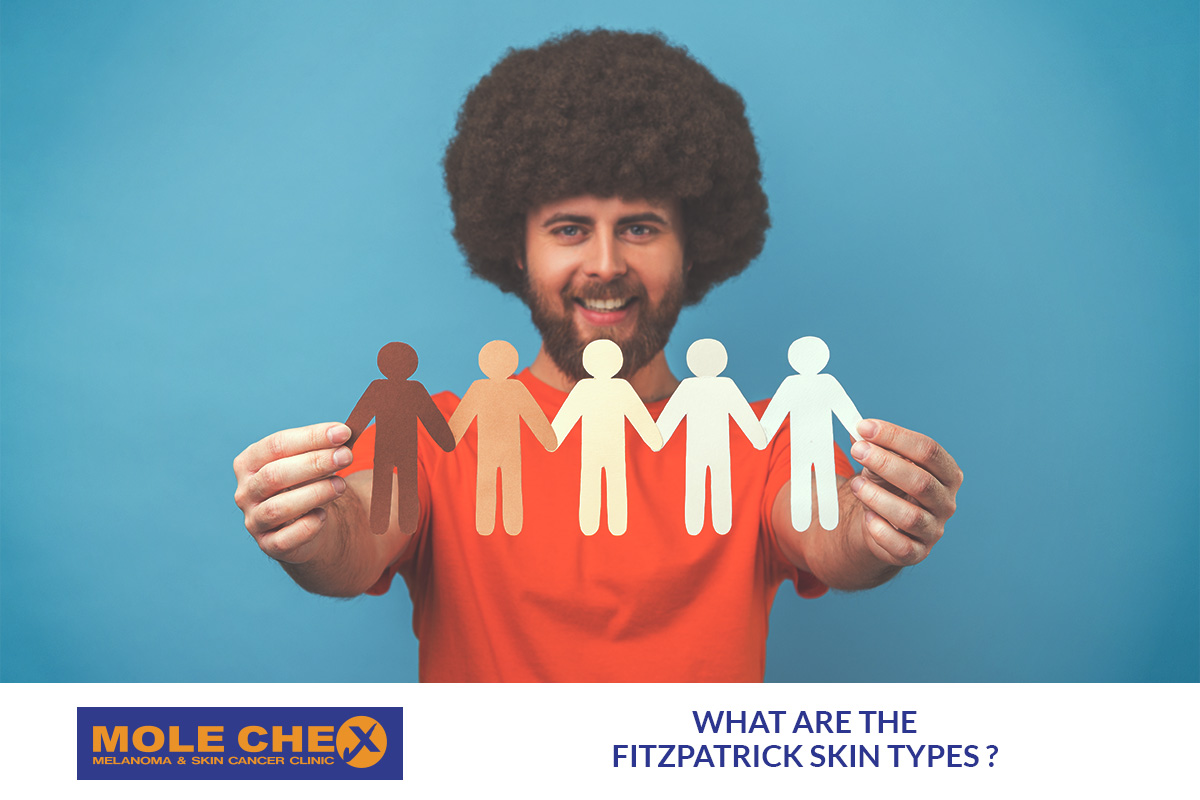What Are the Fitzpatrick Skin Types?

The Fitzpatrick Skin Type classification is a widely used system that categorises skin based on its response to ultraviolet (UV) radiation. Developed in 1975 by Dr. Thomas B. Fitzpatrick, this scale helps dermatologists, skincare professionals, and individuals understand how their skin reacts to sun exposure. This knowledge is crucial for tailoring sun protection strategies, assessing the risk of skin damage, and planning dermatological treatments.
Understanding the Six Fitzpatrick Skin Types
The Fitzpatrick scale includes six skin types, ranging from the fairest skin that burns easily to the darkest skin that rarely burns.
Very Fair Skin (Type I)
- Characteristics: Very light or pale skin, often with freckles. Typically paired with red or blonde hair and light-coloured eyes (blue or green).
- Response to Sun: Always burns and never tans.
- Sun Sensitivity: Extremely high. Requires the most diligent sun protection, including high-SPF sunscreen, protective clothing, and limited sun exposure.
Fair Skin (Type II)
- Characteristics: Fair or light skin, often with light-coloured eyes and hair ranging from blonde to light brown.
- Response to Sun: Burns easily and tans minimally.
- Sun Sensitivity: High. Regular use of sunscreen and sun-protective measures is essential to prevent skin damage.
Medium Skin Tone (Type III)
- Characteristics: Skin with a beige or light olive tone. Hair and eye colour vary widely.
- Response to Sun: Sometimes burns but gradually tans to a light brown shade.
- Sun Sensitivity: Moderate. Tanning provides some protection, but sunburn is still a risk without precautions.
Olive or Light Brown Skin (Type IV)
- Characteristics: Light brown skin often associated with Mediterranean, Middle Eastern, or South Asian heritage.
- Response to Sun: Rarely burns and tans easily to a moderate brown shade.
- Sun Sensitivity: Lower than types I–III, but UV damage and hyper pigmentation remain concerns.
Brown Skin (Type V)
- Characteristics: Dark brown skin, common among individuals of Middle Eastern, African, and some Asian backgrounds.
- Response to Sun: Very rarely burns and tans profusely.
- Sun Sensitivity: Relatively low, but still at risk for long-term UV damage, hyper pigmentation, and other conditions.
Dark Brown or Black Skin (Type VI)
- Characteristics: Deeply pigmented dark brown or black skin, often associated with African, Afro-Caribbean, or Aboriginal heritage.
- Response to Sun: Never burns and tans deeply.
- Sun Sensitivity: While melanin provides strong natural protection, UV exposure can still lead to issues such as dark spots, premature ageing, and skin cancer.
Why Understanding Your Fitzpatrick Skin Type Matters
Knowing your Fitzpatrick skin type can help you take proactive steps to protect your skin and maintain its health.
Sunburn Risk Assessment
The scale provides a general understanding of how prone your skin is to burning. Individuals with Type I or II skin have the highest risk and need rigorous sun protection.
Skin Cancer Prevention
Lighter skin types are more susceptible to skin cancers like melanoma due to lower melanin levels. Darker skin types, while less prone, are not immune. Awareness and regular skin checks are critical for all skin tones.
Tailored Skincare
Different skin types require tailored skincare routines. For example:
- Type I–III individuals may priorities anti-redness products and high-SPF sunscreens.
- Type IV–VI may focus on preventing hyper pigmentation and maintaining an even skin tone.
Dermatological Treatments
Your Fitzpatrick skin type influences how your skin responds to certain treatments like laser therapy or chemical peels. Dermatologists use the scale to determine appropriate treatment intensity and minimise complications.
The Limitations of the Fitzpatrick Scale
While the Fitzpatrick scale is a helpful tool, it has some limitations:
Underrepresented of Darker Skin Tones
The original scale was based on lighter skin types, which means it may not fully account for the diversity of darker skin tones and their unique sensitivities.
Broad Generalisations
The scale focuses primarily on UV response and does not consider other factors like sensitivity to skincare products, acne, or hormonal influences on pigmentation.
Cultural and Genetic Variations
Individuals from the same Fitzpatrick category can still have different skin concerns and reactions based on genetics and environmental factors.
Protecting Your Skin Based on Your Fitzpatrick Type
Type I and II
- Use a broad-spectrum sunscreen with SPF 50+ daily.
- Avoid direct sunlight during peak hours (10 a.m. to 4 p.m.).
- Wear hats, sunglasses, and UV-protective clothing.
Type III and IV
- Apply sunscreen with SPF 30 or higher regularly, especially during prolonged sun exposure.
- Incorporate antioxidants into your skincare routine to combat UV damage.
- Monitor for hyper pigmentation and use brightening products if needed.
Types V and VI
- Use sunscreen with SPF 15–30 daily to prevent hyper pigmentation and premature ageing.
- Avoid over-exfoliating, which can lead to dark spots or uneven skin tone.
- Seek professional advice for persistent pigmentation issues.
Conclusion
The Fitzpatrick Skin Type classification is a valuable framework for understanding your skin’s response to sun exposure and tailoring your skincare accordingly. No matter your skin type, consistent sun protection, hydration, and regular check-ups with a dermatologist are essential for maintaining healthy, radiant skin. By knowing your Fitzpatrick skin type and taking proactive steps, you can protect your skin from UV damage and enjoy long-term skin health. Whether you are fair-skinned or have a deep complexion, every skin deserves the best care possible!
Learn more by reading other articles :
